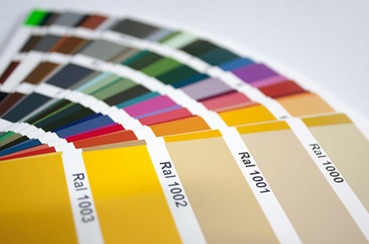You have decided to do house painting in Pleasant Hill. You don’t want to cut corners, not only on the paint, nor on the tools you will use. Before considering the painting part of the task, you may want to do a little research on the right tools. This will save you from spending money on the wrong kinds of tools, or cheap, inferior tools. Plus, the best quality tools, albeit they will cost you more, will save you time and effort when you’re house painting. Spending money on quality tools may be considered an investment.
Brushes
First, you begin with paint brushes. You’d think that selecting paintbrushes is a simple task. In reality, there are a variety of paintbrushes available, so you will need to know first what type of brushes you’ll actually need and use. Whether you are doing interior or exterior painting, choose the right type of brushes based on their size and shape. If you have to cover large surfaces, a bigger brush will do. To cover small areas, use smaller brushes. However, to get the best results, you will want brushes of varying widths and sizes.
- a 4-inch wide (100mm) flat brush with a thickness of 3/4″ to 1″ (25mm to 30mm) will cover larger and wider exterior surfaces.
- a 2-inch wide (50mm) tapered brush is ideal for cutting in at the corners of walls, interior or exterior.
- an angled sash brush for more precise painting on the window frames and trims. These brushes should be measured between 1 and 2.5 inches wide.
- a 3 or 4 inch brush is ideal for interior walls and ceilings.
How do you know that a brush is of good quality? The bristles will tell you. There are two types of bristles (sometimes called filaments): natural and synthetic. Natural bristles are made from hair of hogs or badgers, while synthetic bristles are made from nylon, polyester or a combination of the two. If you use oil-based paints, you will want natural bristle brushes. You cannot use a natural brush for water-based paints as it has the tendency to soak up all of the water and will become limp. For water-based paints, a synthetic brush is ideal.
Better quality bristles should have split ends that are also called “flagged” bristles. Flagged bristles are be able to hold more paint, resulting in a more even, smooth finish on the surface. A good brush should have flex at the tips so that your brush will “bounce” back to its original shape. Some professional painters prefer tipped brushes because they provide them greater control and enable them to paint more precisely.
Rollers
To facilitate painting and save more time, use rollers instead of paintbrushes. Rollers are ideal for interior and exterior walls as well as ceilings. Rollers are ideal for both flat and some textured surfaces such as stucco. However, rollers work best when used on larger, wider surfaces. For applying paint in smaller areas, use paint brushes instead, as you may find it difficult working with rollers on smaller surfaces.
Invest in a good roller cover, which is also called as a sleeve. There are cheaper sleeves out there that are disposable. However, cheap roller covers don’t hold much paint. You’ll end up spending more time trying to paint an entire room and the results may not be what you want.
Roller nap length is another important thing when choosing roller covers. For painting smooth surfaces, choose short-nap rollers, while long-nap rollers are ideal for rough surfaces. There are nap roller sizes ideal recommended for specific textures of the surfaces:
- 1/4 inch nap for smooth surfaces
- 3/8 inch nap for lightly textured walls
- 1/2 inch nap for medium rough surfaces (such as concrete or textured plaster)
- 3/4 inch nap for heavily textured surfaces
- 3/8 inch nap – this is the most versatile as it can be used on any type of surfaces
If you had to paint a room with a high ceiling, forget the step ladder and buy extension poles instead. Choose extension poles with cores made of rigid metal rather than plastic ones, as plastic have the tendency to bend, thus making them harder to control.
Paint pads
You may want to have paint pads handy because they are often needed to paint hard-to-reach places that neither brushers nor rollers will address. While paint pads are not recommended for painting wider areas (as they will leave obvious marks), they are helpful when you cut in corners. Pads can be replaced when they’re overused or damaged.
Roller screens — a bright idea!
You want a faster and easier paint job? Using paint trays is an inconvenience. You may accidentally step on the pan, or are getting tired of seeing spilled paint on the floor or having to refill your pan. Try using roller screens or grids instead. These wonderful tools can help improve your painting efficiency. Roller screens are also called paint grid screens or bucket screens.
To paint with roller screens, first, get a five-gallon sized bucket, and make sure it’s clean. Pour two gallons of paint into the bucket, but not too much. Leave enough room for the paint grid.
Insert the screen into the bucket (a 9-inch size roller screen fits in a five-gallon bucket). The screen comes with two hooks that latch onto the edge of the bucket. Dip a roller cover into the bucket, and then against the grid to drain excess paint. In this way you will get to paint your surfaces evenly and more quickly.
Of course, there are other items you will need when painting. Canvas drop cloths are preferred because they are flexible and reusable. Paint scrapers and spackle may also be needed, as well as painters tape to mask areas that do not need to be painted. Using the best quality painting tools will help you achieve the results you want when house painting in Pleasant Hill.

